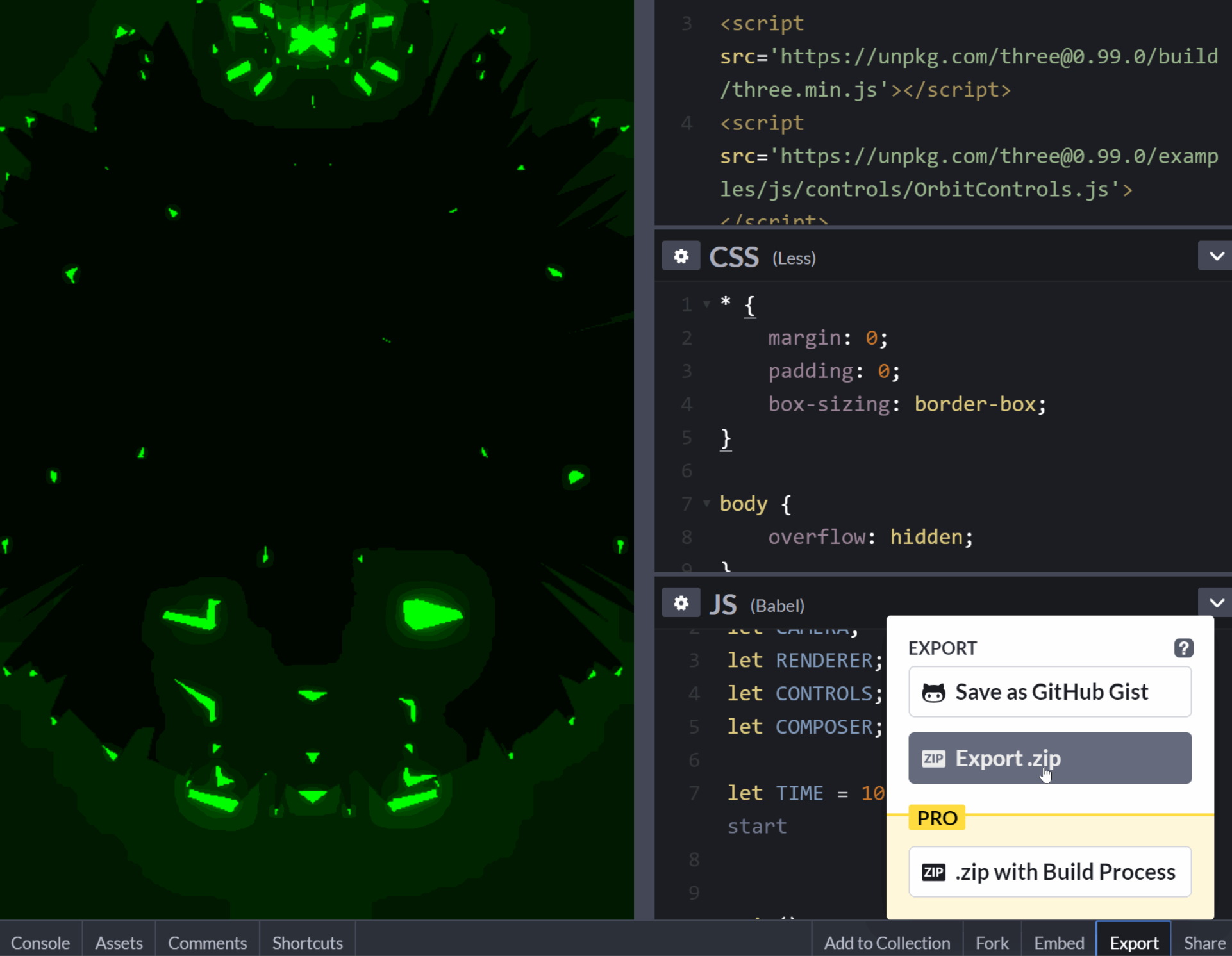There are three advantages of having a fast website:
- A better experience for the user who visits it;
- An increase in the conversion rate, therefore more sales or contacts;
- Better positioning on Google and consequently an increase in traffic.
How to make a website fast
Less complex and faster solutions exist for corporate websites, such as static site generators.
We believe that the use of a static site generator can in many cases be a valid (and often better) alternative to the CMS, that is, to the “classic” administrable site.
Static site generators are tools that operate as a CMS would but generate static HTML files, not dynamically created pages with each user request.
The result is:
- No need for databases
- No software
- No security concerns
- Speed
Fast is not enough, it must also be useful
A website without a clear communication strategy is almost certainly useless.
The fundamental question is how to make a site capable of achieving the goals you have set yourself and make you find new customers.
Realising and publishing a modest web project is now within everyone’s reach, using various tools or platforms available online.
A professional site instead requires study, method, and work.
It is therefore essential to clarify the reasons why a website is created. Once the “why” has been established, the way in which to achieve it is a consequence.
A look at the past: from static sites to CMS
When the Internet was born, the websites were simple “static” HTML pages, possibly generated with tools for individual use such as Microsoft FrontPage.

A static page is like a file on your hard disk: when selected it can be immediately opened with the appropriate software, which in the case of HTML files is the browser (Explorer, Firefox, Chrome for example).
A few years ago CMS (Content Management System) spread, tools created to facilitate the management of the contents of large websites or that require frequent updating even by those who do not have technical programming skills.
The administration interface allows you to manage every aspect of the website and allows dynamic page generation (dynamic therefore refers to the way the pages are generated, at the request of the user; it does not concern the “dynamism” or animation of the contents themselves).
To date, the most popular CMS is Wordpress (which covers almost 50% of the market), Joomla and Drupal, all CMS made in the PHP language.
The main disadvantages of using a CMS are:
- Resources required on the server-side for the publication of the site
- Response time to the page request
- Potential security issues
Furthermore, users often need to rarely intervene on the site and therefore do not reach a sufficient familiarity with the CMS, which in practice becomes a complex tool to use.
So do you really need a complex CMS, complete with MySQL database, for your website?
It depends on the objective, this we have already clarified at the beginning.
We work daily with dynamic CMS-based websites.
For example, in the case of e-commerce sites or portals that require daily updates, it is advisable to use a CMS, which allows a more flexible and “autonomous” management of content.
But for most corporate sites it is not necessary.
Back to the present: static site generators
The static site generators are taking more and more interest in the web community in recent years.
The graph shows the trend in the number of searches carried out on Google in relation to the search keyword “static site generator”.
If you deepen this theme by browsing the web, you often find information on the fact that static sites are not suitable for everyone, both for the lack of a graphical interface that allows content management and for the difficulties related to the installation process and use of the tool used to generate the site.
We think that static sites are suitable for everyone, but they are not suitable for use for everyone. And let’s go back to the initial goal setting.
A comparison between static site generators and CMS

How dynamic CMS websites work
What happens when a visitor arrives on a dynamic site and requests content?
Simplifying the discussion as much as possible, we can say that there is a server-side request that queries one or more databases to search for the content, this is transmitted to a system of templates that shape the content itself and generate the page that the user sees within your browser.
How static websites work
Static websites are made up of HTML files, uploaded to the server and ready to be served directly to the user’s request, which immediately displays them in his browser.
Advantages of static websites
1) Speed
Surely the first thing that strikes about a static site is speed.
The web page management in the form of the static site guarantees to obtain very high performance in terms of page loading speed with a series of advantages in terms of usability for users and Google ranking.
This aspect has had increasing relevance since Google declared that speed is king, that is, it introduced in its indexing algorithms the criteria that favor the positioning of pages with fast loading compared to slower pages. In 2015, Google made new tools available to webmasters that allow you to test the rendering speed of pages.
2) Security
Tools such as WordPress or Joomla are Open Source projects that involve very large communities.
They must be constantly monitored as security problems are periodically identified, various flaws that allow attackers to compromise the functioning of the system. This is not due to an intrinsic vulnerability of the systems, but to the attention to which they are subjected due to their high diffusion.
A static website is much more secure as it only requires a web server capable of serving simple HTML pages: by applying minimum security requirements to the infrastructure that hosts it, the static website is practically unassailable.
3) Lower hosting cost
Installing and maintaining the hardware and software infrastructure necessary for a dynamic site to function can become challenging, especially when multiple servers are needed to get everything running.
Furthermore, a dynamic site is dependent on the infrastructure that hosts it and this, in fact, makes it difficult to transfer if you decide to change hosting providers.
On the contrary, once the static site is generated, the final result is made up of a series of HMTL files that can be served by any web server.
In case you decide to change hosting provider, the transfer process is painless and immediate.
4) Better management of traffic peaks
When the website is subject to traffic spikes (for example after starting a web marketing campaign or sending a newsletter), if the website is dynamic, traffic management can become a problem due to the intrinsic complexity of the system that hosts it.
Amidst traffic surges, especially following the initiation of a web marketing campaign or the distribution of a newsletter, the challenges of managing website traffic intensify.
Meta advertising agencies, with their expertise in optimizing online visibility, play a pivotal role in navigating such intricate scenarios. Their strategies adapt to the dynamic nature of websites, effectively addressing the complexities inherent in the hosting systems.
If the speed of page loading decreases and the percentage of loading errors increases, the result will be an abandonment of the site by the user who is visiting it, thus making the investment sustained to generate the increase in traffic vain.
A static site withstands this type of stress much better: serving static HTML pages requires fewer resources from the server: with minimal infrastructure precautions, the pages will continue to be served very quickly and the user experience will continue to be of a high standard.
The criticality of static websites (and solutions we offer)
1) Real-time or personalized content per user
With a static site, there is no possibility to view the information in real-time (indications such as “the most-read posts of the last two hours” of a blog) or information that changes for each visitor (“articles recommended for you” of e-commerce).
Static means that it does not change autonomously and that it is the same for everyone.
If the need is to have a site customized for the user, it is not appropriate to choose a “static site”.
2) Insertion of comments by the visitor
In the case of blogs or similarly developed according to the static philosophy, it is possible to use special third-party tools (for example Disqus - https://disqus.com ) to allow users to enter their comments.
3) Completion of contact forms by the visitor
In the event that the static site requires the classic contact form, Tiiny Host provides a service for this purpose: the user fills out the form on the static site and the service takes care of collecting information, storing it on a DB and sending notification emails; on request, the service can be extended to allow access to the “history” of the requests made and export them to a file compatible (for example) with Excel.
4) User interface for content management
We can classify the contents of a static website into two different types:
Content updated by the client with a certain frequency; Content updated only occasionally.
The content with high updating frequency can be made administrable through a special administration interface developed by Tiiny Host specifically for this purpose.
The administration back office is simple and intuitive, aimed at publishing the types of pages identified. At the end of the modification of the pages, the administrator user proceeds with the static site regeneration command.
The use of the architecture of this type allows us to decouple the possible revision/renewal of the site from content management, it will, therefore, be possible to create a new site while safeguarding most of the content already produced.
A strong push towards this direction is above all in large companies where several people are involved in content management and where the contents themselves can be used in different forms.
In the case of content updated only occasionally, we support the customer with our intervention, which is budgeted on the basis of the update requested from time to time. In this way, the customer will only have to supply the materials to be modified and we will take care of everything, with evident optimization of times and costs.
Some testimonials
At this moment the static site generators are the subject of great interest and attention from the experts, some of the most important sites in the world use static generators:
- Github Pages, the largest developer community, over 12 million subscribers, is made with Jekyll https://github.com/pages.
- Mailchimp, the most popular newsletter system has a site created in Middleman (https://mailchimp.com)
- Nest, the innovative home automation company acquired by Apple (https://nest.com).
- The 2012 Obama presidential campaign site was static (and raised $ 250 million in funds).
- Healthcare.gov in 2013 switched to a CMS-free website.


